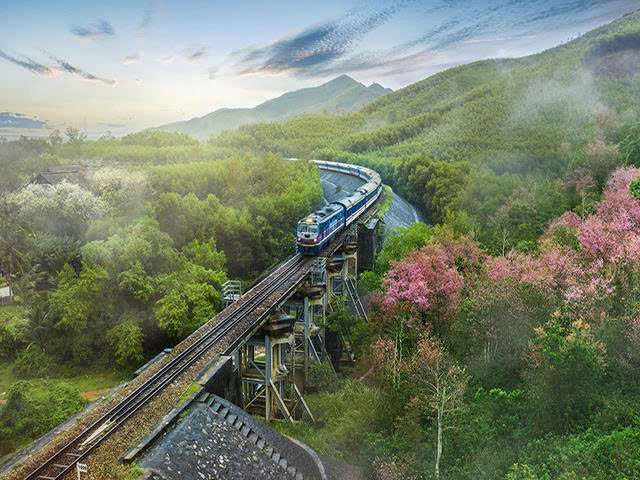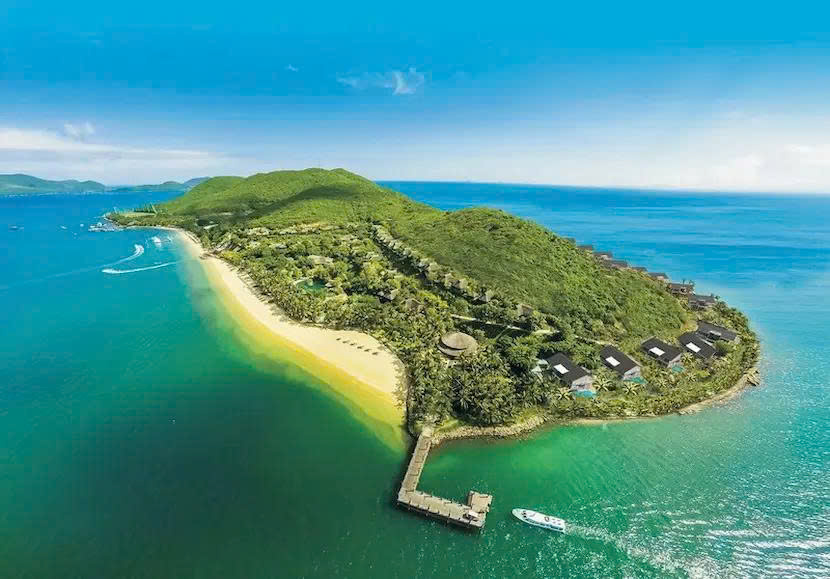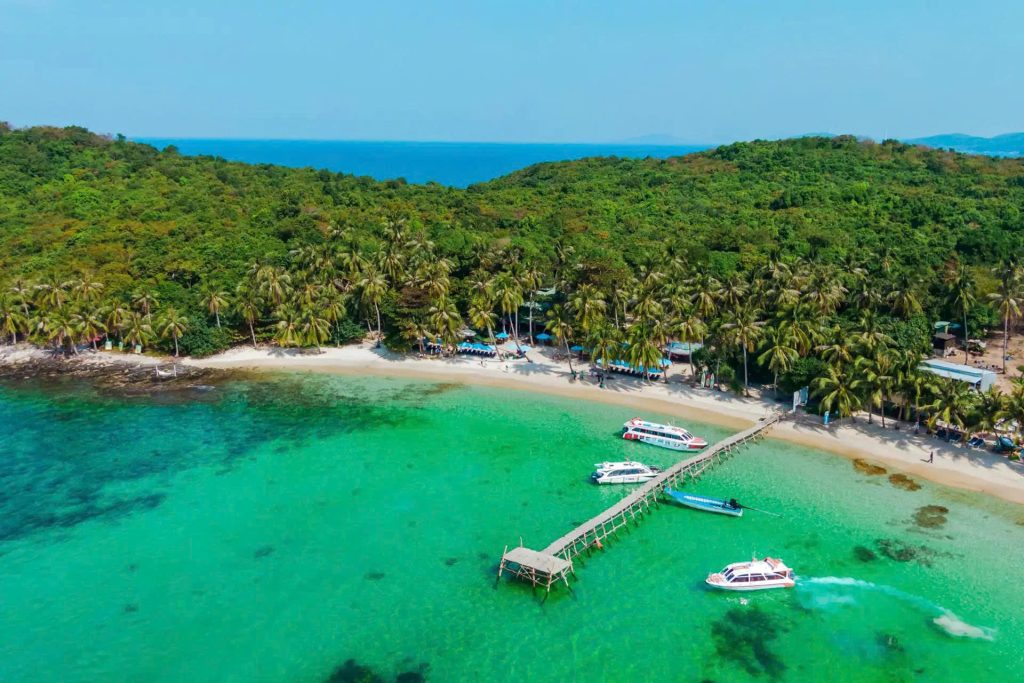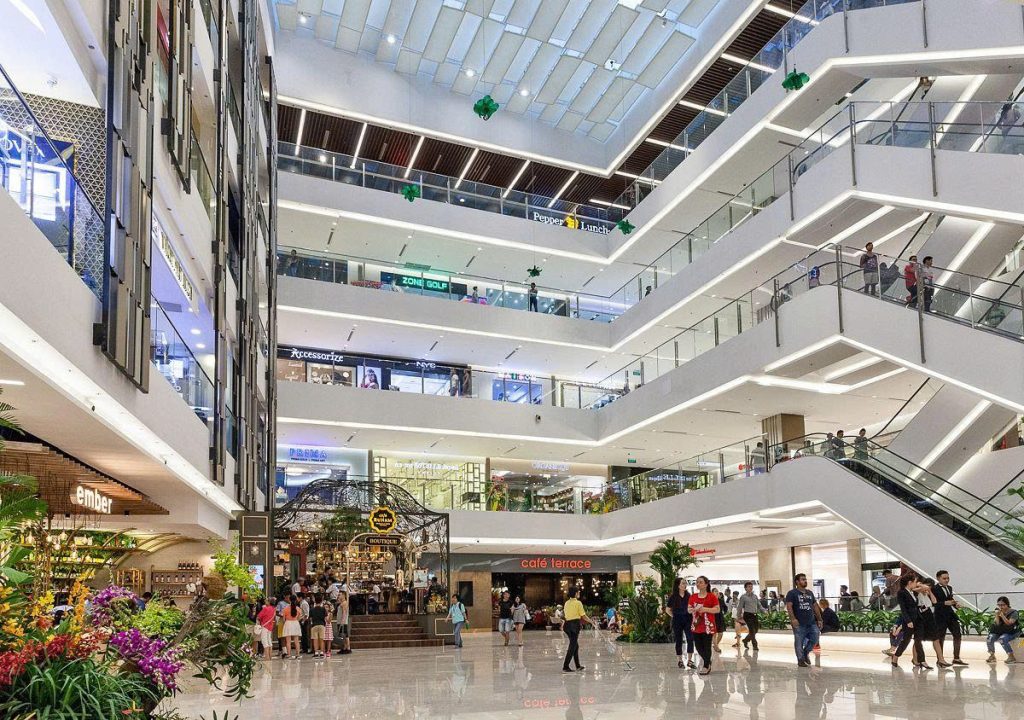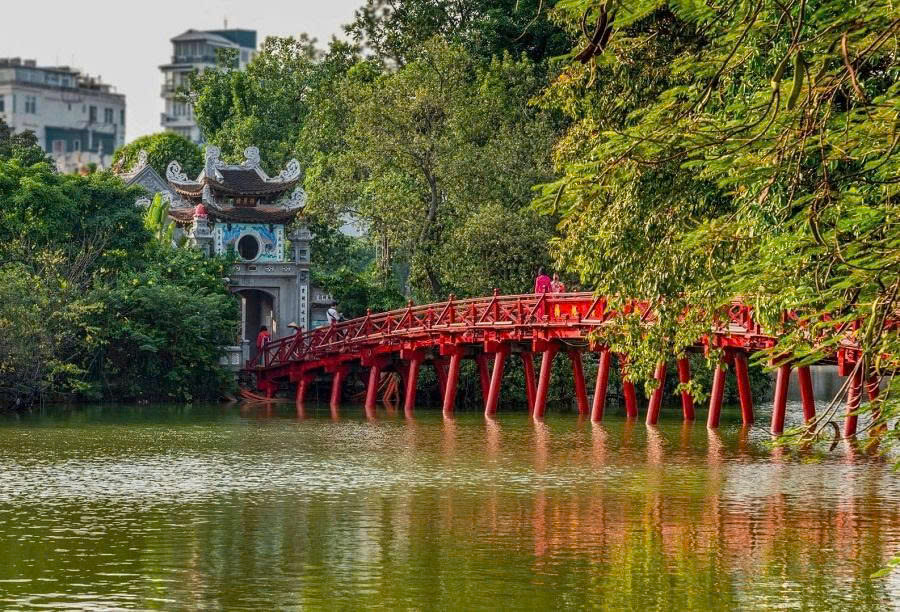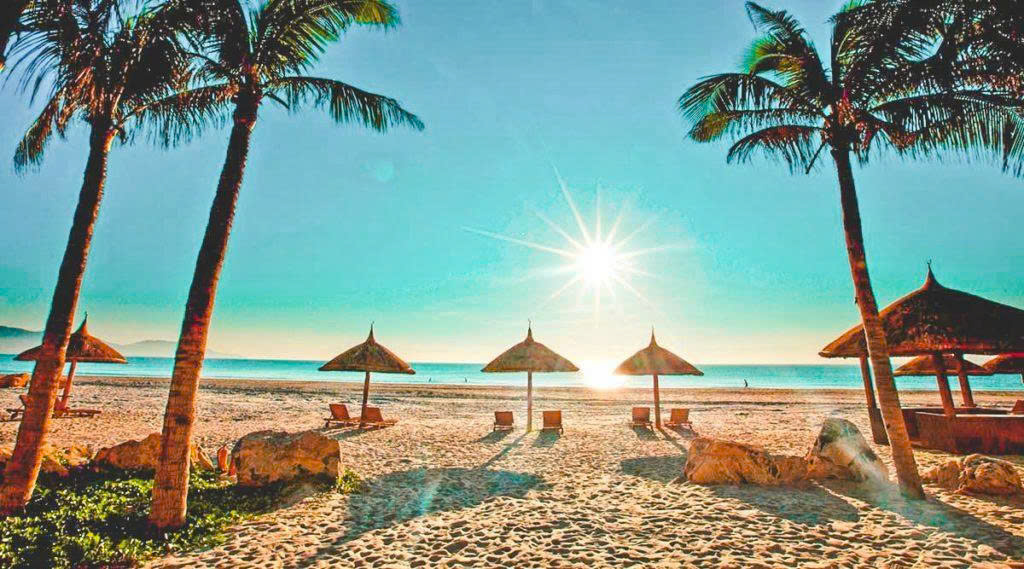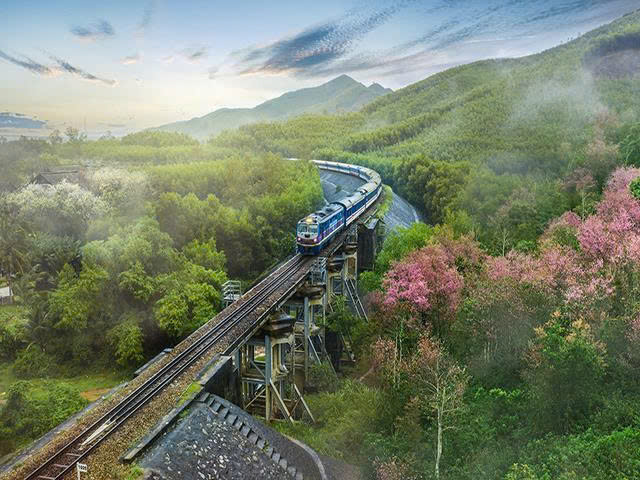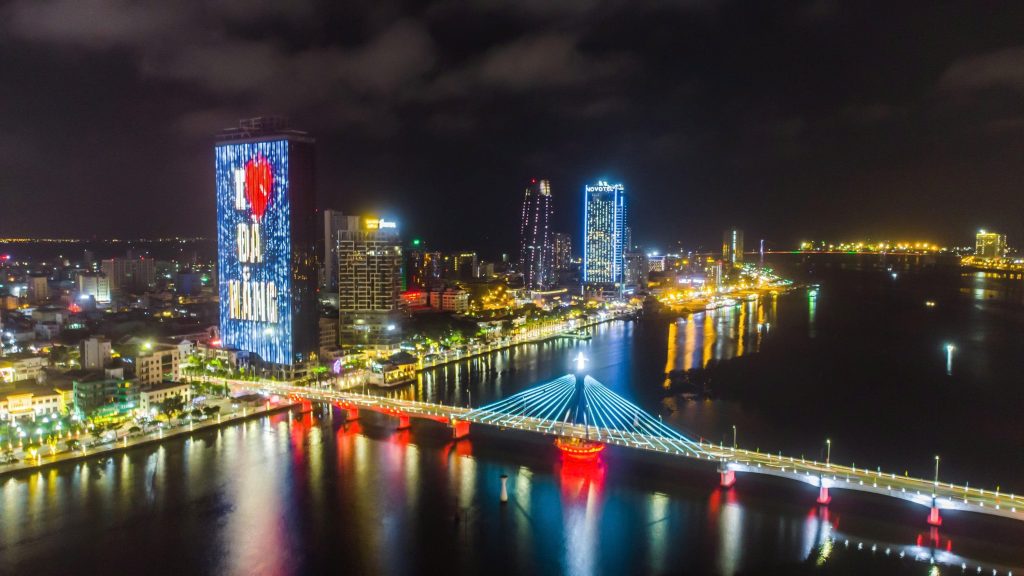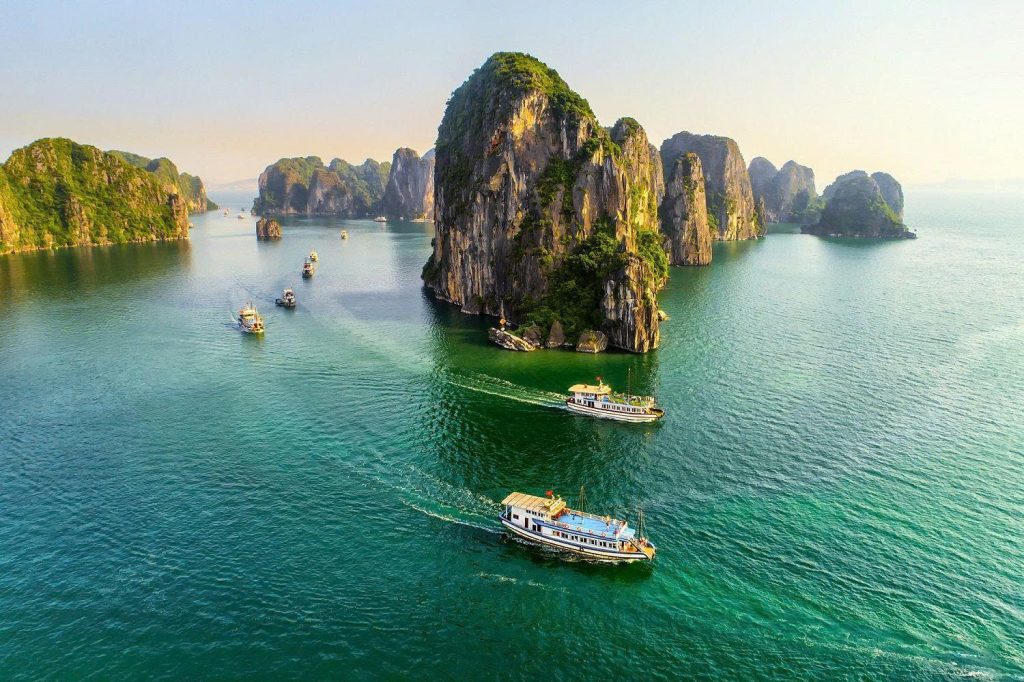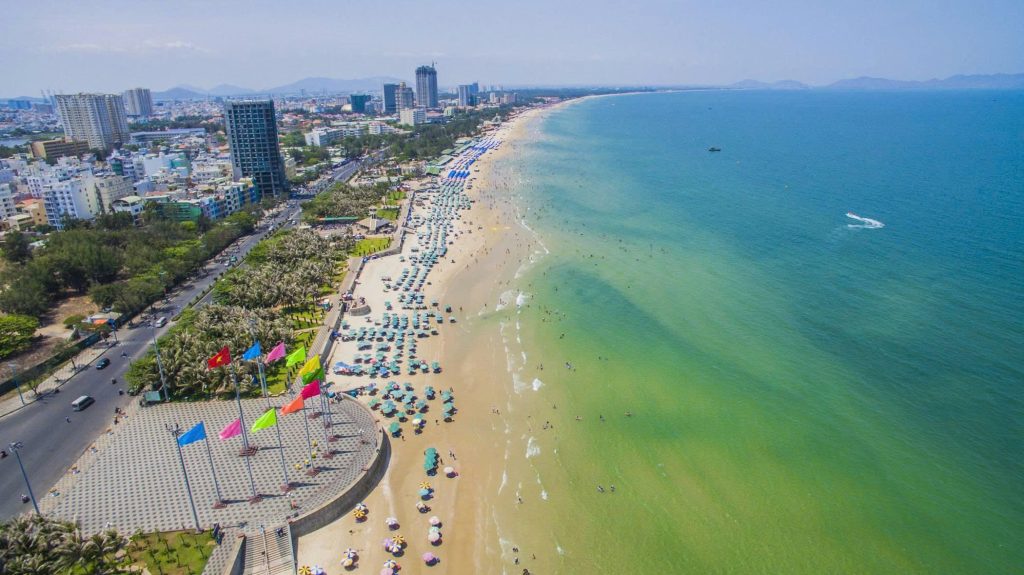Sapa, a jewel nestled high in the Hoàng Liên Sơn mountain range of Lào Cai Province, Northern Vietnam, is universally recognized for its spectacular natural beauty and the intricate mosaic of its ethnic minority cultures. For the dedicated traveler, it is a destination that promises profound connection and exhilarating challenge. This Sapa Trekking Guide: Ethnic Cultures and Terraced Rice Fields is a definitive, expert-level resource designed to prepare you for a transformative journey, adhering strictly to the highest standards of responsible tourism and deep cultural immersion.
1. Unpacking the Sapa Phenomenon: Geography, History, and the Appeal
Sapa’s allure lies in the symbiotic relationship between its dramatic geography and the human effort required to thrive within it. Understanding this foundation is the first step towards a responsible trek.
The Geographical and Ecological Context of the Hoàng Liên Sơn
Sapa sits at an altitude of approximately 1,500 meters (4,921 ft), giving it a sub-temperate climate unique for Southeast Asia. This topography dictates both the agriculture and the trekking environment.
RELATED: 10-Day Northern Vietnam Itinerary: Hanoi, Sapa, Halong Bay & More
The “Roof of Indochina” – Mount Fansipan and its Influence
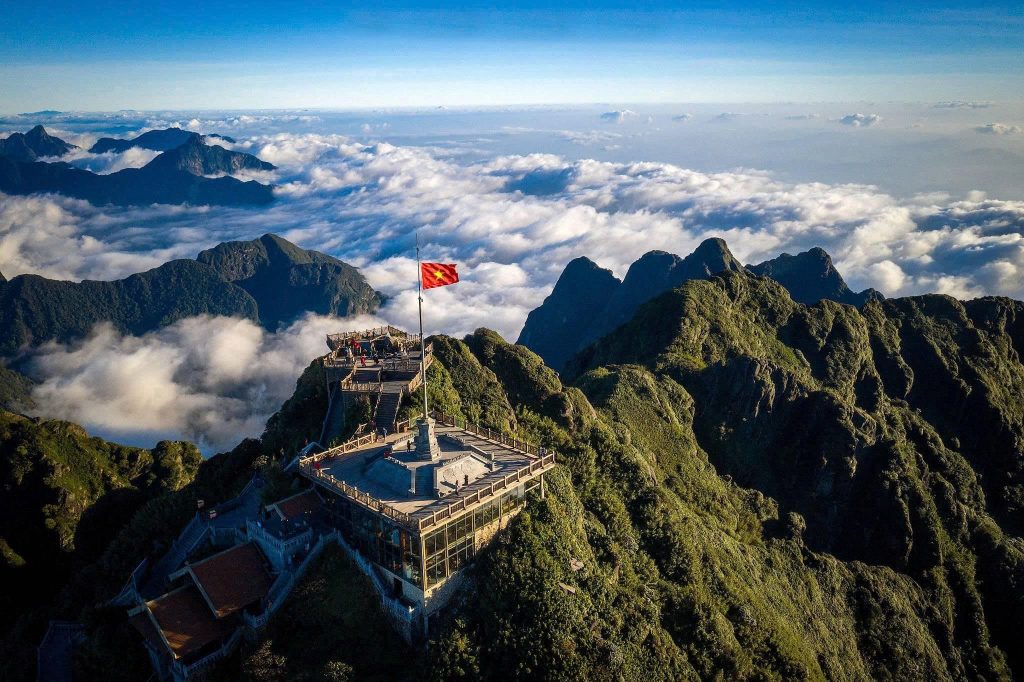
The towering presence of Mount Fansipan (3,143m), the highest peak in Indochina, shapes Sapa’s climate, trapping clouds and moisture. This creates the perpetual, mystical mist that often shrouds the valleys, earning Sapa the moniker “Town in the Clouds.” The rugged terrain forces farming onto terraced slopes, giving rise to the iconic landscape.
RELATED: Best Time to Visit Sapa for Rice Terraces: Your Planning Guide
Understanding the Unique Sub-Tropical Monsoon Climate
Sapa experiences four distinct seasons, a critical factor for trekking. The rapid climate changes within a single day demand respect and preparation. This knowledge is key to the Expertise of a seasoned traveler.
- Dry Season (March to May & September to November): Ideal trekking conditions; moderate temperatures and clearer skies.
- Wet/Summer Season (June to August): Characterized by high humidity and heavy afternoon rains, leading to muddy trails but the most vibrant green rice terraces.
A Brief History: From French Hill Station to Cultural Hub

Sapa was established in the early 20th century as a hill station retreat for French colonists seeking refuge from the heat of Hanoi. This colonial legacy has contributed to the town’s architecture, yet the deep-rooted identity of the surrounding villages remains fiercely independent.
The Early Tourist Entity and its Evolution
The initial wave of tourism centered on the colonial-era villas. Today, the tourist focus has shifted entirely to the ethnic villages and the trekking routes—a testament to the enduring appeal and resilience of the local Ethnic Cultures. Modern Sapa town acts primarily as a base camp, while the authentic experience lies miles down the valley.
RELATED: Things to do in Sapa Vietnam: All You need to know
2. Planning and Preparation: Building Your Trekking Expertise
A successful trek requires meticulous planning, especially when navigating unfamiliar terrain and cultural boundaries.
The Golden Rule: Time Your Visit Around the Terraced Rice Fields
Timing is everything in Sapa, as the landscape transforms dramatically depending on the rice cycle. We focus on the two peak periods that define Sapa’s beauty:
The Golden Season (Late August to Early October)

This window represents the peak of Sapa’s natural beauty. The rice is ripe, turning the entire Mường Hoa Valley into cascading rivers of gold. This season offers the driest and coolest trekking conditions, making it suitable for all fitness levels.
RELATED: Best Time to Visit Sapa for Trekking
The Water Pouring Season (Late April to Early May)
A visually stunning period where the terraced fields are flooded with water, turning the landscape into massive reflecting pools. While trekking paths can be slick, the photographic opportunities are unparalleled, reflecting the intense labor that precedes the planting season.
Logistics and Transportation to the North
Reaching Sapa from Hanoi involves two primary transport entities, both requiring overnight travel.
The Overnight Train to Lào Cai
The traditional and romantic route. The train offers a comfortable sleeper option, arriving at Lào Cai Station early in the morning. From there, a 45-minute bus or taxi transfer is necessary to reach Sapa town. This is often preferred by those who value a good night’s rest. (Check for tickets here: Victoria Express Train, )
The Sleeper Bus Direct to Sapa
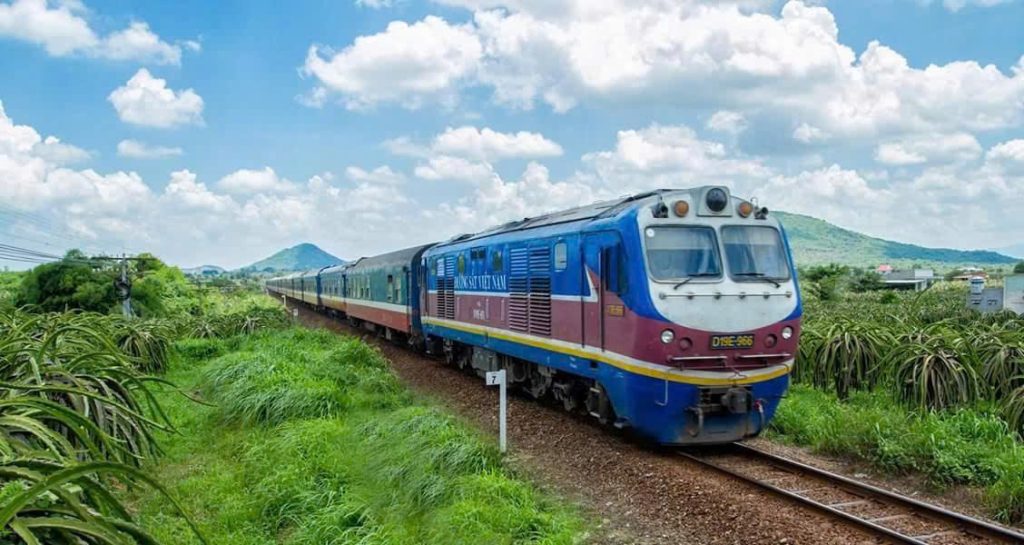
The more modern and often faster option. Direct sleeper buses travel the new highway, taking approximately 6-7 hours and dropping you directly in Sapa town. This is the choice for budget-conscious and time-constrained travelers.
RELATED: Hanoi Travel Guide: Discover Vietnam’s Ancient Heart
Essential Gear and Physical Readiness
Drawing on our Experience, we emphasize gear selection crucial for Sapa’s terrain.
- Footwear: Must be waterproof with excellent ankle support. The mud on the valley trails, especially after rain, is thick and challenging.
- Safety: A well-stocked small first-aid kit, including blister pads, essential medications, and water purification tablets, is non-negotiable.
- Guidance: Do not underestimate the value of a professional guide. Trekking solo, especially off-trail, is not recommended due to quickly changing weather and confusing paths through the terraces.
RELATED: How to Travel from Hanoi to Sapa: Your Transportation Guide
3. Navigating the Trails: A Deep Dive into Sapa’s Key Trekking Routes
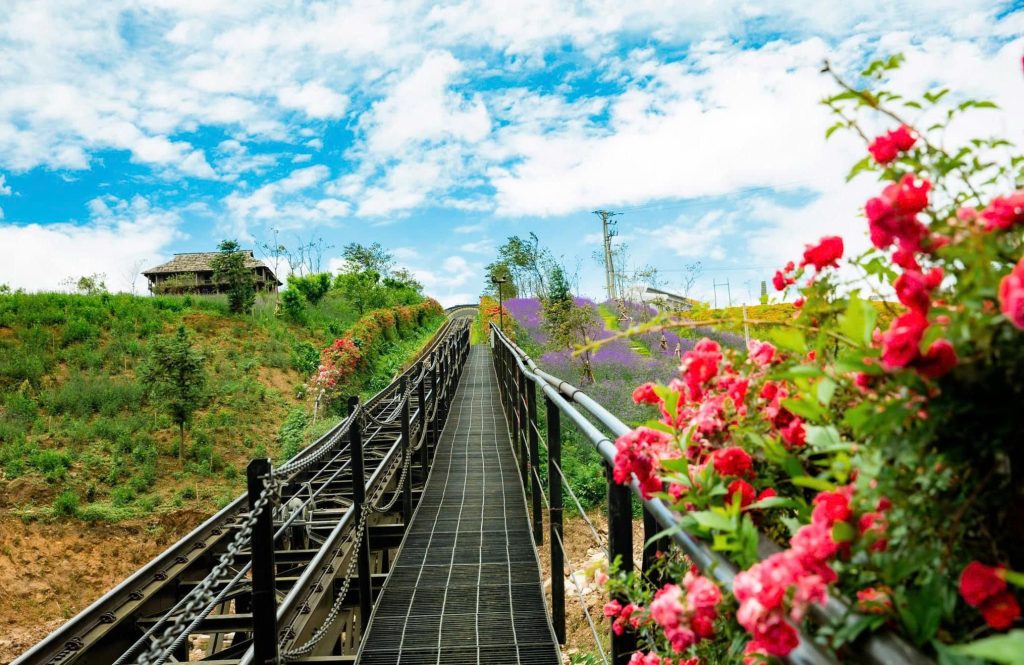
This section moves beyond basic directions, providing an expert-level analysis of the most significant trekking routes in Sapa. We detail the physical demands, the type of scenery, and the unique cultural entities (villages) you will encounter along the way, helping you select the perfect path for your desired level of immersion.
The Classic Immersion: Y Linh Ho – Lao Chai – Ta Van
This is the quintessential Sapa Trekking Guide experience. It is the route that defines the region, offering the highest concentration of spectacularly tiered rice fields and the richest variety of ethnic interactions. Typically structured as a 2-day/1-night trek with a genuine village homestay, it serves as the perfect introduction to the heart of the Mường Hoa Valley.
Y Linh Ho – The Starting Point of the Black H’Mông Solitude

The initial descent from Sapa town leads you away from the commercial center and into the serene quiet of the valley. Y Linh Ho Village is the gateway to this classic trek.
- The Descent and Terrain: The first phase is characterized by a steep, sometimes challenging downhill path (especially in wet conditions), offering immediate, breathtaking panoramic views. This section demands sure footing and respect for the natural environment. The trails here are less worn than closer to Sapa town, giving an initial feeling of immediate solitude.
- Cultural Vignettes: Y Linh Ho is home to smaller, more scattered hamlets of the Black H’Mông people. You will often see them working their fields or herding water buffalo in isolation. This part of the trek emphasizes the harmonious coexistence of the ethnic people with the raw, mountainous terrain, offering pristine photo opportunities of the terraces without the large crowds.
Lao Chai – The Terraced Field and H’Mông Heartland
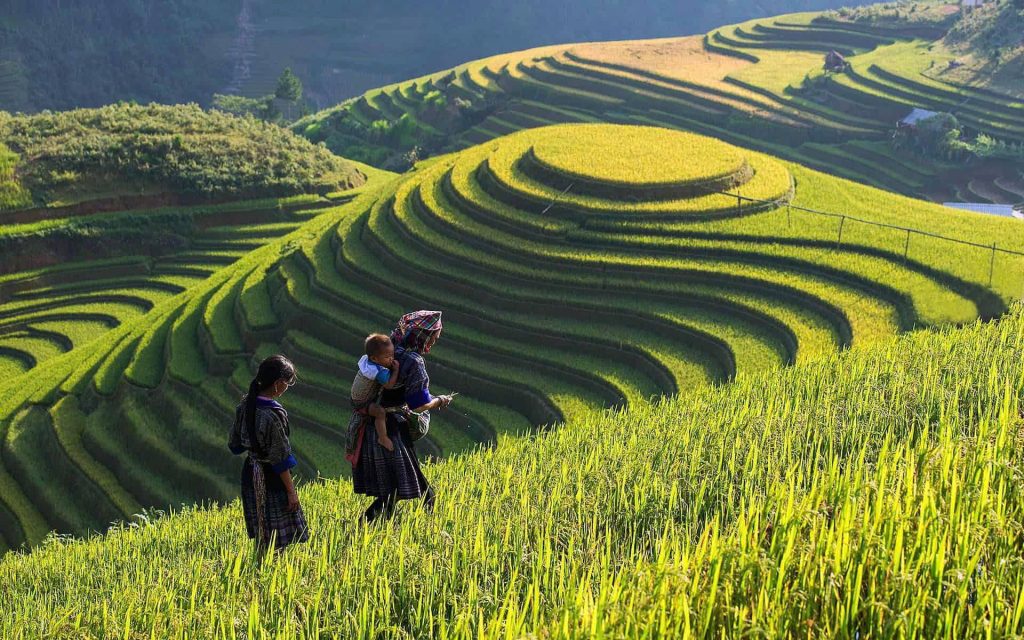
Continuing deeper into the Mường Hoa Valley, you arrive at Lao Chai Village, which translates roughly to “Old Village.” This village is truly the geographical and cultural heart of the H’Mông territory.
- The Landscape Focus: Lao Chai is situated amidst some of the world’s most renowned and spectacularly maintained terraced rice fields. The trekking route gently follows the banks of the Mường Hoa Stream, providing constant, shifting perspectives of the cascading terraces above. The scale of the fields here is immense, offering evidence of the profound agricultural Expertise of the H’Mông people over centuries.
- Cultural Deep Dive: Indigo Dyeing: A key cultural entity to observe here is the traditional indigo dyeing process. You will often see women with dark blue-stained hands working with large vats of fermented indigo. This natural dye is central to the Black H’Mông’s identity, used to color their distinctive hemp and cotton clothing. This practice represents a tangible link to their heritage and sustainable production methods.
- The Homestay Experience: Lao Chai offers numerous opportunities for lunch breaks at local homes, providing the first intimate Experience with H’Mông cuisine and hospitality.
Ta Van – Bridging the Cultures and the Giáy Hearth
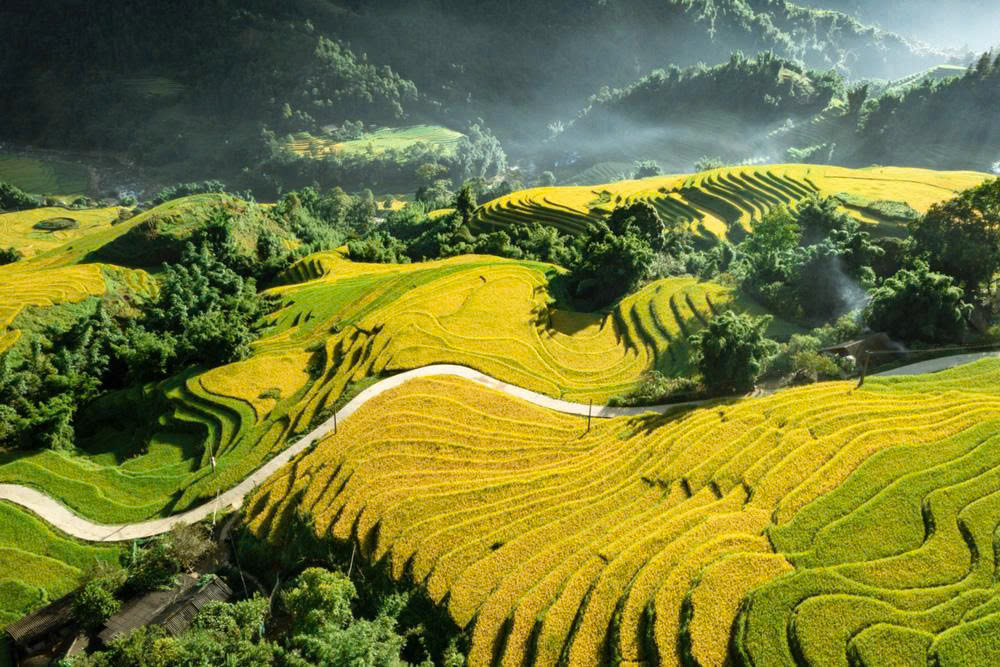
As the endpoint for this classic overnight trek, Ta Van Village provides a crucial cultural contrast. While many residents are Black H’Mông and some Red Dao, the village is primarily the domain of the Giáy people.
- Architectural Distinction: Unlike the primarily wooden houses of the H’Mông, the Giáy often inhabit traditional wooden stilt houses with wider eaves, reflecting their history as lowland farmers who adapted to the mountain environment.
- A Rationale for Homestays: Ta Van is famous for its abundant and welcoming homestays. Staying here offers travelers the chance to observe the subtle differences in customs, language, and house construction between the three co-existing ethnic groups. This cultural blend offers a richer, more nuanced anthropological study than a single-culture village. The evening spent sharing meals and rice wine (rượu ngô) with a local family forms the peak of the cultural exchange Experience.
The Cultural Specialty: Ma Tra – Ta Phin Loop
For travelers seeking a route less defined by rice fields and more by unique Ethnic Cultures, the Ma Tra – Ta Phin loop offers a shorter but deeply intense experience, focusing heavily on the Red Dao community.
The Red Dao: Ta Phin Village and Its Mystique

Known for their unique writing system and medicinal knowledge, the Dao live in the highlands.
Ta Phin is the most significant center for the Red Dao people in Sapa. The route here is often quieter, winding through pine forests and small streams before opening up to the village.
- The Terrain and Views: The paths to Ta Phin are typically less frequently traveled than the Mường Hoa Valley, offering a quieter, more reflective trek. The terraced fields surrounding Ta Phin are generally less uniform than Lao Chai’s but are stunningly beautiful, often appearing more natural and interspersed with small traditional wooden houses.
- The Identity Marker: The Red Dao are instantly recognizable by their striking, elaborate red headscarves, often adorned with silver coins and colorful wool tassels. This vibrant attire is a powerful visual cue that reinforces the distinct cultural Distinction of the Red Dao from their H’Mông neighbors.
The Herbal Medicine Experience
The defining cultural experience of the Ta Phin area is the traditional Red Dao herbal bath (tắm lá thuốc). This practice elevates the journey from a simple trek to a holistic cultural immersion.

- Cultural Significance: The Red Dao are celebrated masters of herbal medicine, their Expertise passed down through generations. They utilize dozens of specific herbs and plants foraged from the Hoàng Liên Sơn mountains to create a potent, aromatic bath.
- The Tangible Connection: The bath is believed to possess powerful healing and restorative properties. Trying this bath after a long day of hiking is not just therapeutic for the muscles but provides a direct, tangible connection to their ancient healing traditions and deep knowledge of the local flora. It epitomizes the responsible, experiential travel goal.
4. The Ethnic Cultures: Understanding the Soul of Sapa
The Ethnic Cultures are the most vital entity of the Sapa experience. These communities are the custodians of the landscape, and responsible engagement requires knowledge, respect, and a commitment to ethical spending, fulfilling the core tenet of Trustworthiness.
Portrait of the Key Ethnic Groups
Sapa is a rare area where you can observe distinct cultural practices of multiple, officially recognized ethnic groups, each with a profound history in the region.
The Black H’Mông: Masters of the Mountain and Indigo
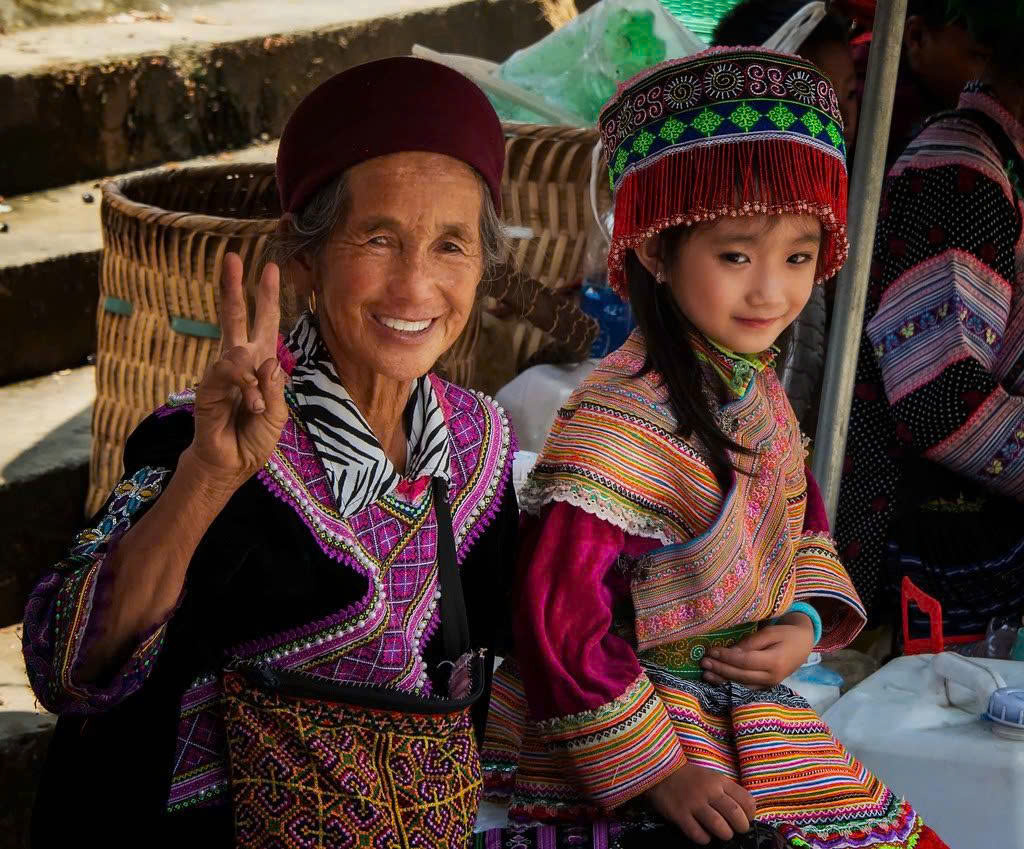
The Hmong are a vibrant ethnic group, known for their stunning textiles and farming traditions.
- Distinction and Demographics: The H’Mông are the largest ethnic group in the Sapa region. Their name, “Black H’Mông,” refers to the dominant, dark indigo-dyed color of their clothing. Their traditional attire is durable, functional for mountain life, and decorated with intricate batik and embroidered geometric patterns.
- Cultural Focus: Agricultural & Spiritual Expertise: They are the undisputed primary architects of the terraced fields, displaying profound agricultural Expertise in managing steep slopes and water flow. Their spiritual life is guided by animism and ancestor worship, where nature spirits and house spirits play a crucial role. Respecting their home and land is central to their belief system.
The Red Dao: Keepers of Tradition and Herbal Lore
- Distinction and Identity: The Red Dao are immediately recognizable by their distinctive headwear—large, vibrant red scarves often intricately wrapped and embellished with tassels, beads, and silver. Their Cultural Focus lies heavily on ritual and tradition.
- Unique Cultural Entities: They are one of the few groups in Vietnam to possess a written language based on Chinese characters called Nôm Dao. Furthermore, their social structure is heavily defined by complex wedding and funeral rituals, which are central to their community life and demonstrate their commitment to preserving deep traditions.
The Giáy and Tày: Valley Dwellers and Cultural Synthesizers
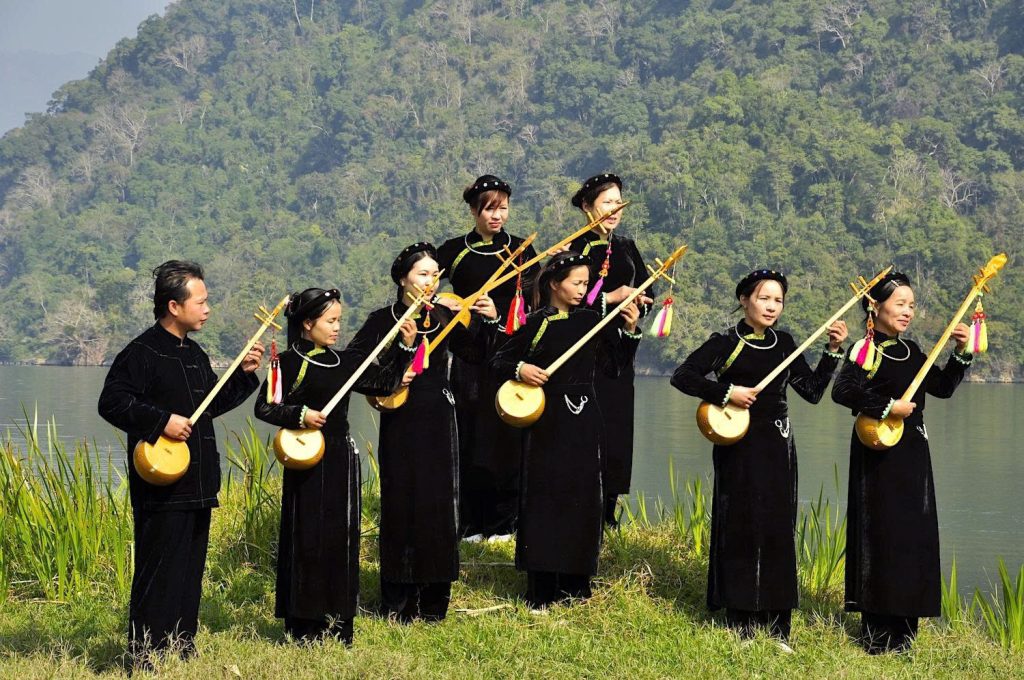
- Location and Lifestyle: These groups are often found in the lower-lying, valley areas, such as Ta Van (Giáy) and surrounding villages (Tày). They traditionally practice wet rice cultivation in flatter paddies where possible, supplementing with dry rice on the slopes.
- Architectural and Cultural Focus: They typically live in traditional wooden stilt houses to avoid dampness and animals. Their culture shows a strong influence from traditional Vietnamese (Kinh) and Chinese practices, resulting in a fascinating cultural synthesis that makes them excellent hosts and communicators. Their hospitality is often characterized by warmth and community-focused celebrations.
Ethical Engagement and Responsible Tourism
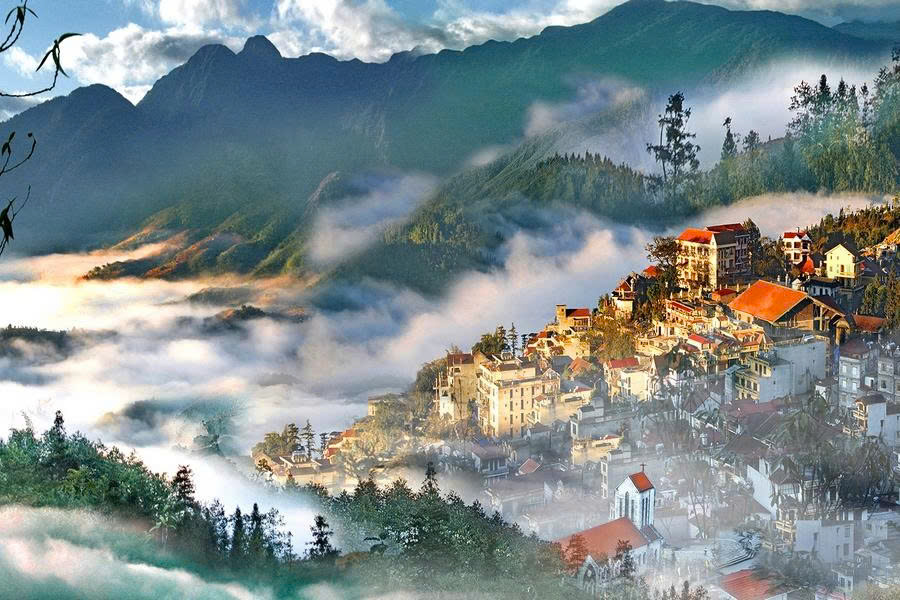
The Homestay Etiquette
- Asking Permission: Always ask the host before taking photos, especially of elderly people or children. Never point your feet at the altar or sleeping areas.
- The Economy of Interaction: Purchase handicrafts directly from the person who made them at the homestay or during the trek, rather than from shops in Sapa town. This ensures direct economic benefit to the family.
Trading and Giving to Children
- A Firm “No”: Avoid giving money or candy directly to children. This practice fosters dependency and creates a ‘begging culture.’ Instead, donate school supplies or necessities through a verified local NGO or your trusted local guide.
RELATED: The Best Homestays in Sapa Vietnam
5. The Terraced Rice Fields: An Agricultural and Spiritual Landscape
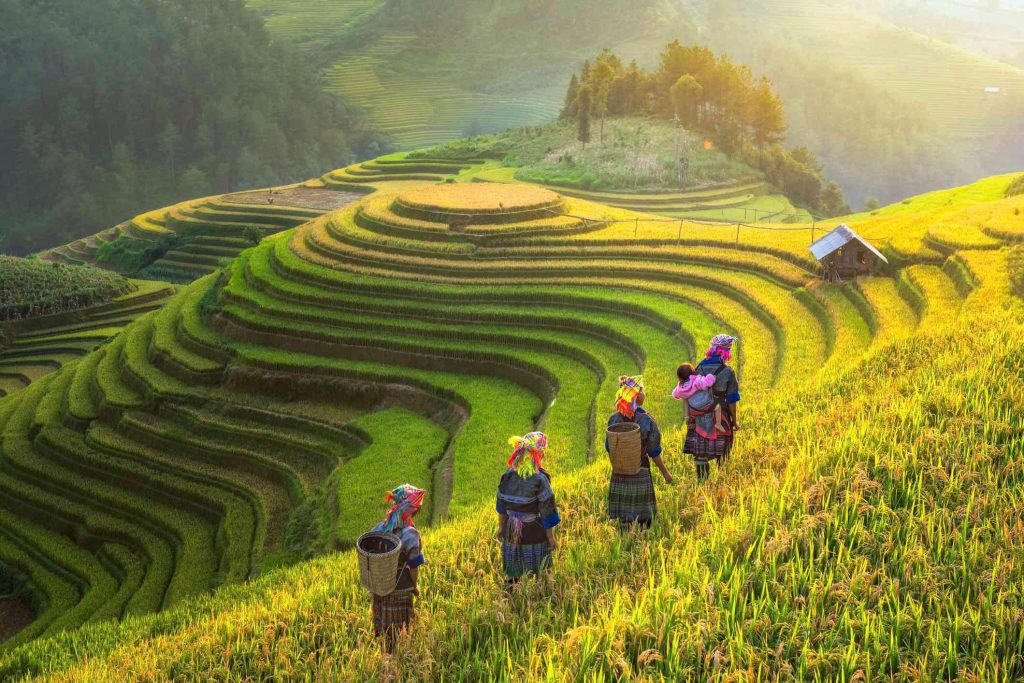
The terraced rice fields are more than just a beautiful backdrop; they are the economic and spiritual backbone of the ethnic communities.
The Engineering and Sustainability of Terrace Farming
The sheer scale of the terracing is a profound demonstration of human collaboration with nature, a thousand-year-old sustainable practice.
Water Management and Shared Resources
The terraces operate using a complex gravitational irrigation system, relying on mountain springs and rainfall. The distribution of water is a communal task, often governed by long-standing village rules, highlighting the deep social cohesion within the community.
The Mường Hoa Valley – The Geographic Heart of the Terraces
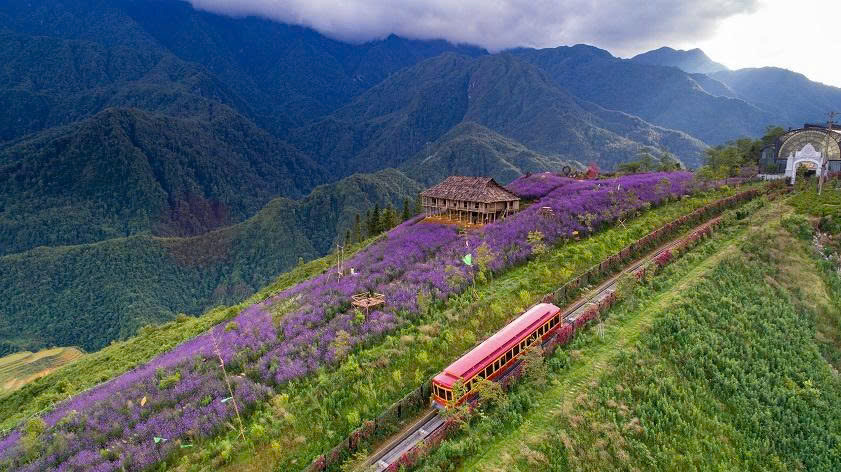
The Mường Hoa Valley is the most famous concentration of terraces. Trekking down into this valley offers changing perspectives—from a panoramic bird’s eye view to the intimate experience of walking along the narrow earthen banks between the paddies.
The Spiritual Connection to the Land
For the H’Mông and Dao, the land is sacred. The cyclical nature of the rice—from dry soil to flooded mirror, from green growth to golden harvest—is tied to their spiritual calendar, festivals, and ancestral beliefs. Trekking through them is walking through their history and faith.
RELATED: Eco-Friendly Resorts in Sapa: Discover Your Green Getaway
6. Practical Sapa Trekking Guide – Services and Safety
The Importance of a Local Guide
Hiring a guide from the local H’Mông or Red Dao community is the single most important decision for your trek.
Language and Navigation
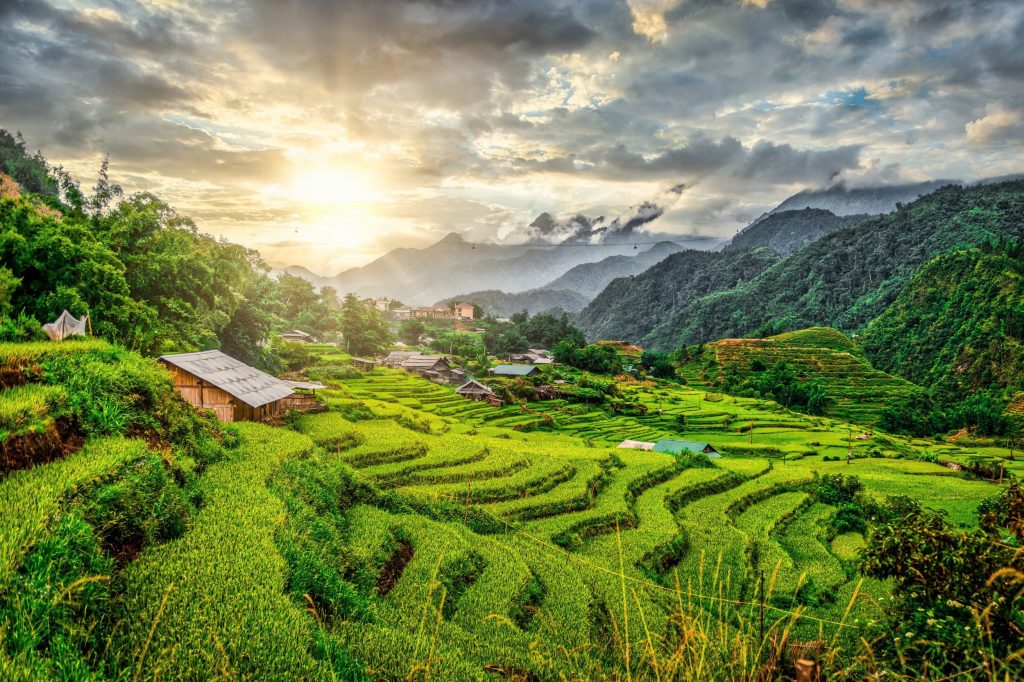
Local guides offer invaluable language assistance and navigate the often unmarked trails with innate knowledge. They can share stories and insights into the landscape and culture that no guidebook can provide.
Supporting Community Economies
Choosing a local guide, such as those operating through verified entities like Sapa Sisters or Sapa O’Chau, ensures that the economic benefit directly empowers the ethnic minority women and their families, fulfilling the highest standard of responsible tourism.
Safety, Health, and Contingency Planning
- Trail Safety: The paths can be exceptionally slippery. Never rush. Always use both hands and feet where necessary.
- Weather: Sapa is prone to sudden fogs and downpours. Carry rain gear at all times.
- Altitude: While Sapa town is high, the trekking routes rarely pose an altitude sickness risk to fit travelers.
RELATED: Ho Chi Minh City Guide 2026: Culture, Food & Nightlife
7. Beyond the Trek: Sapa’s Cultural and Natural Extensions
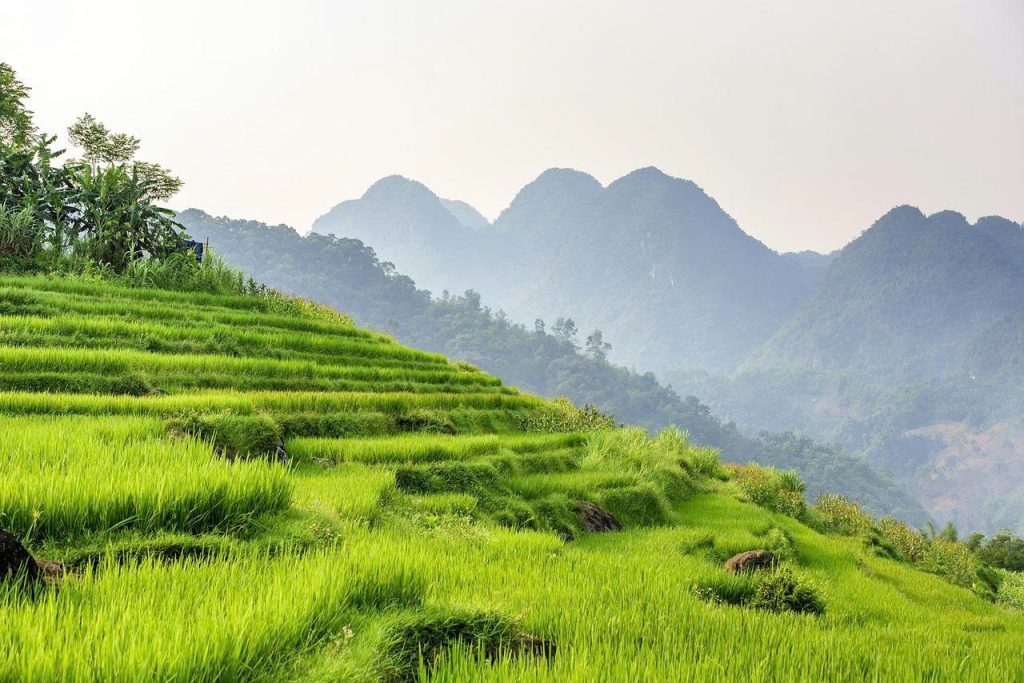
Sapa’s Notable Cultural Markets
Visiting a minority market is a true glimpse into the regional commerce and social life.
Bắc Hà Market (Sunday): The largest and most colorful market in the region, featuring Flower H’Mông, Phù Lá, and Tày people. While a long drive from Sapa, the sheer variety of goods, livestock, and traditional costumes makes it an unparalleled cultural highlight.
Cán Cấu Market (Saturday): Smaller and more remote, offering a highly authentic, less tourist-centric experience.
Natural Highlights
- Thác Bạc (Silver Waterfall): A dramatic cascade easily accessible from Sapa town.
- Đèo Ô Quy Hồ (Ô Quy Hồ Pass): One of the four great passes of Vietnam, offering panoramic views of the Hoàng Liên Sơn range and a fantastic sunset spot.
RELATED: Best Time to Visit Vietnam: Weather by Month & Tips
A trek through Sapa is not merely a sightseeing excursion; it is a profound educational and cultural exchange. By focusing on The Ultimate Sapa Trekking Guide: Ethnic Cultures and Terraced Rice Fields, we encourage travelers to move with intent—respecting the ancient lands, honoring the resilient cultures, and ensuring that their journey leaves a positive, sustainable imprint on this magnificent corner of the world.



